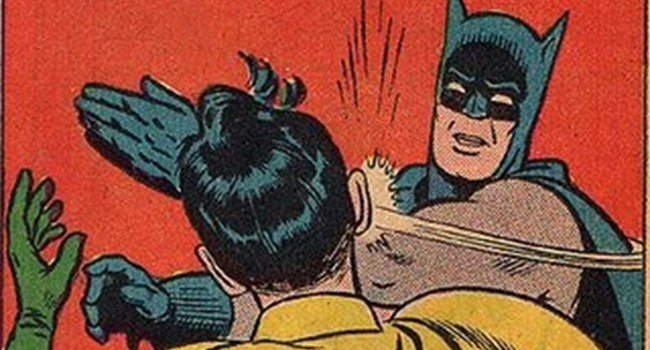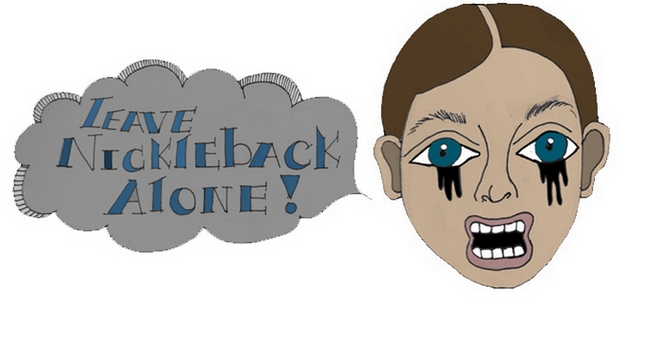 There’s the old, tired adage detailing the recipe for the lifestyles of the most decadent and talented musicians in history—sex, drugs and rock ‘n’ roll. But what happens when we ignore the heroin and the hit singles? That leaves us with sex. These rock stars sure can go through their women, but some lucky ladies have managed to stick around longer than most. These women eventually became icons in their own rights and inspired some of the most groundbreaking music of their respective eras. Was it these powerful and beautiful women who spurred rock’s most important creative insights? Or were these just well timed epiphanies? This a-wondering begs the question—which came first, the beauty or the beat?
There’s the old, tired adage detailing the recipe for the lifestyles of the most decadent and talented musicians in history—sex, drugs and rock ‘n’ roll. But what happens when we ignore the heroin and the hit singles? That leaves us with sex. These rock stars sure can go through their women, but some lucky ladies have managed to stick around longer than most. These women eventually became icons in their own rights and inspired some of the most groundbreaking music of their respective eras. Was it these powerful and beautiful women who spurred rock’s most important creative insights? Or were these just well timed epiphanies? This a-wondering begs the question—which came first, the beauty or the beat?
The most appropriate time to begin this analysis would be the beginning of one of music’s most important stylistic revolutions—the folk movement. During their brief relationship that spanned the major folk movement of the 1960s, Bob Dylan and Joan Baez reigned as King and Queen of the genre. Dylan was entranced by Baez’s angelic voice but opted to pursue her younger sister Mimi. Baez paid no mind to the young “urban hillbilly.” But in due time, both musicians would eventually become smitten by one another. Baez encouraged Dylan to accompany her during her 1963 tour and often sang duets with him, referring to Dylan as “my little vagabond.” Dylan offered to return the favor in 1965 to revive Baez’s fledgling career when he invited her on his 1965 European tour. Baez crossed the ocean for both love and a possibility of self-validation in her own genre; but Dylan then went to break both his promise and her heart. After two years of this musical-romantic partnership, it was over.
Dylan continued to ride his wave of success and has continued to record well past his musical prime. Baez, on the other hand, faded out of the limelight. A romance with Steve Jobs and a memoir are the highlights of Baez’s career since the relationship. She continues to exercise her position as a political activist. Dylan’s initial popularity should undoubtedly be credited to Baez. Without her endorsement and countless opportunities for Dylan, he would never have achieved such notoriety in the developing genre of folk music. I declare a victory for the beauty in this tragic case.
The couple that initially led me to this “Beauty and the Beat” theory was Stevie Nicks and Lindsey Buckingham, whose beyond-dysfunctional artistic and romantic partnership created some of the best music of the 1970s. I’m an avid Fleetwood Mac fan and will defend the credibility of these two lovebirds until my final days, Rumours vinyl in my cold, dead hands—but back to the romance.
 The abbreviated version of this decades-long affair goes as follows: Stevie and Lindsey met through a religious youth group and decided to form a band. Stevie waited tables and cleaned houses to make ends meet as Lindsey toyed away on guitar all day (Warren Zevon frequented their humble abode). After cutting their eponymous debut album Buckingham Nicks, the duo caught the attention of eccentric drummer and founding member of Fleetwood Mac, Mick Fleetwood. Mick offered Lindsey a job as a guitarist, but Lindsey insisted that he and his petite blonde sidekick were a package deal. Fleetwood begrudgingly accepted this offer; this new lineup revived Fleetwood Mac and led to its most successful album, Rumours.
The abbreviated version of this decades-long affair goes as follows: Stevie and Lindsey met through a religious youth group and decided to form a band. Stevie waited tables and cleaned houses to make ends meet as Lindsey toyed away on guitar all day (Warren Zevon frequented their humble abode). After cutting their eponymous debut album Buckingham Nicks, the duo caught the attention of eccentric drummer and founding member of Fleetwood Mac, Mick Fleetwood. Mick offered Lindsey a job as a guitarist, but Lindsey insisted that he and his petite blonde sidekick were a package deal. Fleetwood begrudgingly accepted this offer; this new lineup revived Fleetwood Mac and led to its most successful album, Rumours.
The simultaneous decay and dissolution of every band member’s relationship fueled the emotionally charged record and also led Stevie to sleep with Mick, Don Henley and a slew of fellow rockers of the 70s. Lindsey wrote the bitter “Go Your Own Way” as a triumphant middle finger to Stevie. His ex-lady opted for a more emotional route by writing Grammy-winning B-Side “Silver Springs.” Lindsey and Stevie continued to flirt with the possibility of reuniting, until Lindsey found it to be high time to settle down and pop out a few little rockers of his own. Stevie has remained single but continues to voice her undying love for Lindsey in her painfully disappointing solo releases. Fans continue to fuel reunion fantasies with speculations on the meaning behind the palpable sexual tension between these two now-sexagenarians. They may be old, but damn it, they still have eye-sex like a couple of horny teenagers.
This couple, and others within Fleetwood Mac, leads one to believe that both love and its loss seem to be the greatest inspirations for innovative music. The best FM albums were during times of elation and sorrow for the band members. In the case of Fleetwood Mac, Nicks and Buckingham especially, the incestuous relationships within the band served as the stimulus for their greatest hits and most emotionally charged pieces. The volatile dynamic of the members’ romantic relationships was instrumental in their musical success and iconography.
The most powerful rock music seems to have been inspired by relationships, most often their dissolutions.
 Speaking of inter-band incest, Anita Pallenberg has slipped between the sheets of the most iconic members of The Rolling Stones; I’m sure she has other accomplishments, but none nearly as impressive as this feat. Her involvement with Brian Jones, Mick Jagger and Keith Richards may not have spawned hit singles, but it certainly fueled their tabloid-friendly image and continues to entrance fans. Not to mention it leading to some of the greatest rifts within the band.
Speaking of inter-band incest, Anita Pallenberg has slipped between the sheets of the most iconic members of The Rolling Stones; I’m sure she has other accomplishments, but none nearly as impressive as this feat. Her involvement with Brian Jones, Mick Jagger and Keith Richards may not have spawned hit singles, but it certainly fueled their tabloid-friendly image and continues to entrance fans. Not to mention it leading to some of the greatest rifts within the band.
A self-destructive model from Rome, Pallenberg entranced the equally unstable Brian Jones at a photo shoot in 1965. The founding member of The Rolling Stones managed to keep a grasp on her until 1967, when Keith Richards literally stole her from his band mate’s grasp and fled to Morocco in one of his many luxury, soon-to-be-crashed convertibles. It’s also speculated that Anita occupied herself for these two years that elapsed by hooking up with Mick Jagger on the set of their blockbuster bomb vampire-flick Performance. Practices of witchcraft and heavy heroin use whittled away at Pallenberg and Richards’ relationship so heavily that not even their three children could hold them together. They managed four turbulent years together, officially ending their partnership in 1981.
Pallenberg was no groupie or band wife–she actively influenced the Stones’ music. After she voiced her disapproval of the album’s direction, various tracks of Beggars Banquet were immediately remixed per Mick Jagger’s request. She even showed some talent beyond posing in overpriced couture when she was credited for singing background vocals on “Sympathy for the Devil.” While Pallenberg did contribute something to the Stones, not all contributions were necessarily positive. On this witchy model’s rap sheet included a relentless heroin addiction and a manslaughter case. She may have brought more harm than good to The Rolling Stones, but she did add to their rough-and-tumble tabloid image along with inspiring some incredible cuts in their catalogue. (“Wild Horses” was penned about hers and Richards’ child Tara, who died 10 weeks after his birth.)
 Heroin and excess aren’t all that musical-romantic partnerships have to offer. Dr. Seuss once described love as a “mutual weirdness” shared between two people. But this couple is literally in love with one another’s eccentricities; they are Win Butler and Régine Chassagne. The two leading members of Arcade Fire, Chassagne and Butler’s seven-piece band brought indie to the masses with their 2011 Artist of the Year riding on The Suburbs wave of success. Butler was just an aimless Sarah Lawrence dropout and Chassagne spent her time singing in Canadian jazz clubs. It was only until these two combined artistic forces did they reach success. Chassagne exerted a great deal of artistic direction for the album Funeral, with several songs featuring lyrics sung in French in honor of her Haitian heritage. Cryptic and scatterbrained in many interviews, Chassagne is just as whimsical and childlike as her onstage persona. Butler, the more serious of the two, seems to be a grounding element for his hurdy gurdy- playing nymph wife. There’s no doubt that these two are definitely at their musical best together, no matter how incredibly eccentric and oddball they may be.
Heroin and excess aren’t all that musical-romantic partnerships have to offer. Dr. Seuss once described love as a “mutual weirdness” shared between two people. But this couple is literally in love with one another’s eccentricities; they are Win Butler and Régine Chassagne. The two leading members of Arcade Fire, Chassagne and Butler’s seven-piece band brought indie to the masses with their 2011 Artist of the Year riding on The Suburbs wave of success. Butler was just an aimless Sarah Lawrence dropout and Chassagne spent her time singing in Canadian jazz clubs. It was only until these two combined artistic forces did they reach success. Chassagne exerted a great deal of artistic direction for the album Funeral, with several songs featuring lyrics sung in French in honor of her Haitian heritage. Cryptic and scatterbrained in many interviews, Chassagne is just as whimsical and childlike as her onstage persona. Butler, the more serious of the two, seems to be a grounding element for his hurdy gurdy- playing nymph wife. There’s no doubt that these two are definitely at their musical best together, no matter how incredibly eccentric and oddball they may be.
My final case in regards to the “Beauty and the Beat” theory is the star-crossed romance of Glen Hansard and Markéta Irglová. Few can say that their romance was genuinely caught on camera. Practically none can say the same about their breakup. But the two core members of The Swell Season Markéta Irglová and Glen Hansard (of The Frames) can watch their relationship grow and eventually unravel on the silver screen. The two began dating following the filming of Once, a retaliatory effort to remain sane during a hectic touring and promotion schedule. At 18 years her senior, Hansard’s relationship with then-19 year-old Markéta seemed doomed. And for once, public speculation reigned true. The release of documentary The Swell Season chronicled the demise of their romantic relationship and the strengthening of their musical partnership. All occurring in two fleeting years, the two became co-stars, lovers, fighters, band mates, and finally their current status artistic partners.
While The Frames was a long-time acclaimed Irish rock band, it is doubtful that Hansard would have reached such public acclaim without the influence of Irglová. She pacifies him, allows his overpowering angst to settle so he can showcase his poetic lyrics with the melodies created by his beautifully mutilated Takamine. The coalescence of Irglová’s innocent, soft voice with Hansard’s raspy wails is the perfect marriage of vocals, which is a consolation for the fact they may not be so perfect in more romantic capacities.
 The most powerful rock music seems to have been inspired by relationships, most often their dissolutions. While the matter of the beauty and the beat may not be cut and dry, it may have a conclusion. Maybe the beauty inspired the beat; or the beat preceded the beauty; but what matters is that the song is recorded, to remain for all eternity. And every time we hear it we can imagine the love that inspired that piece and confirm that maybe fairy tales aren’t real, but maybe love is.
The most powerful rock music seems to have been inspired by relationships, most often their dissolutions. While the matter of the beauty and the beat may not be cut and dry, it may have a conclusion. Maybe the beauty inspired the beat; or the beat preceded the beauty; but what matters is that the song is recorded, to remain for all eternity. And every time we hear it we can imagine the love that inspired that piece and confirm that maybe fairy tales aren’t real, but maybe love is.



